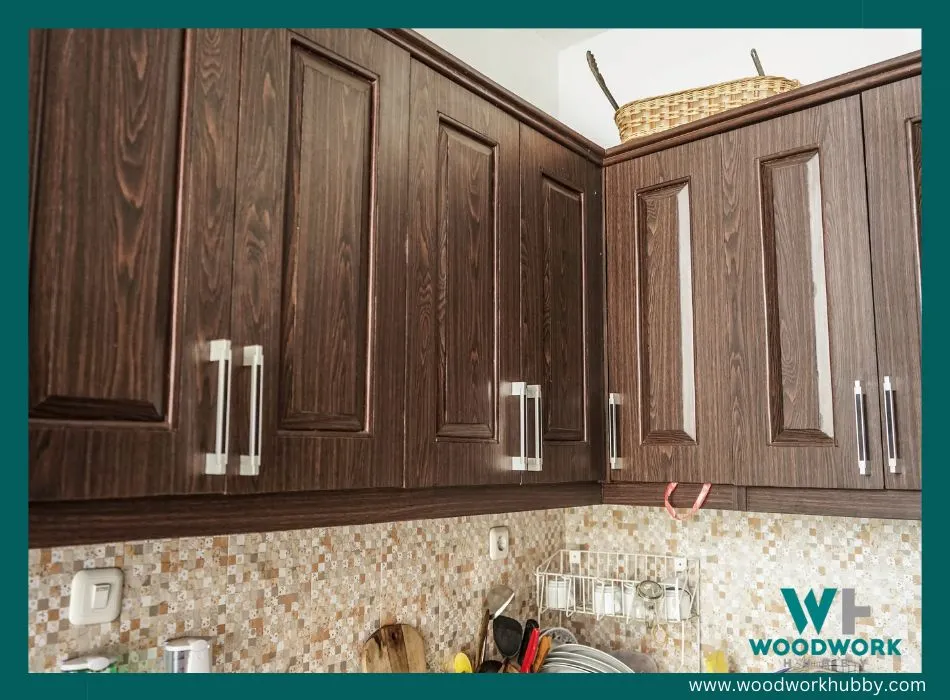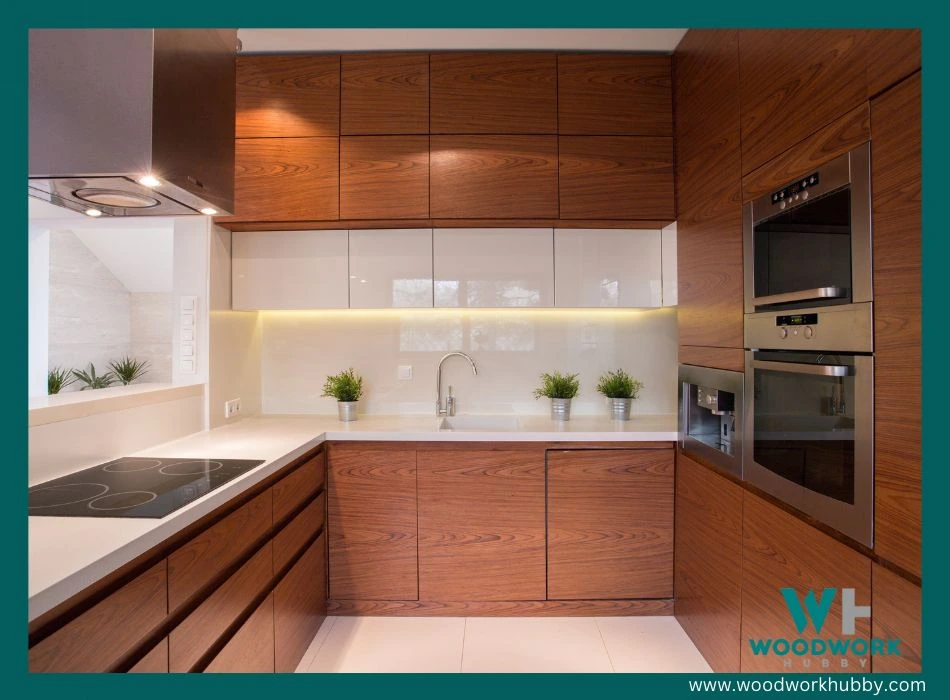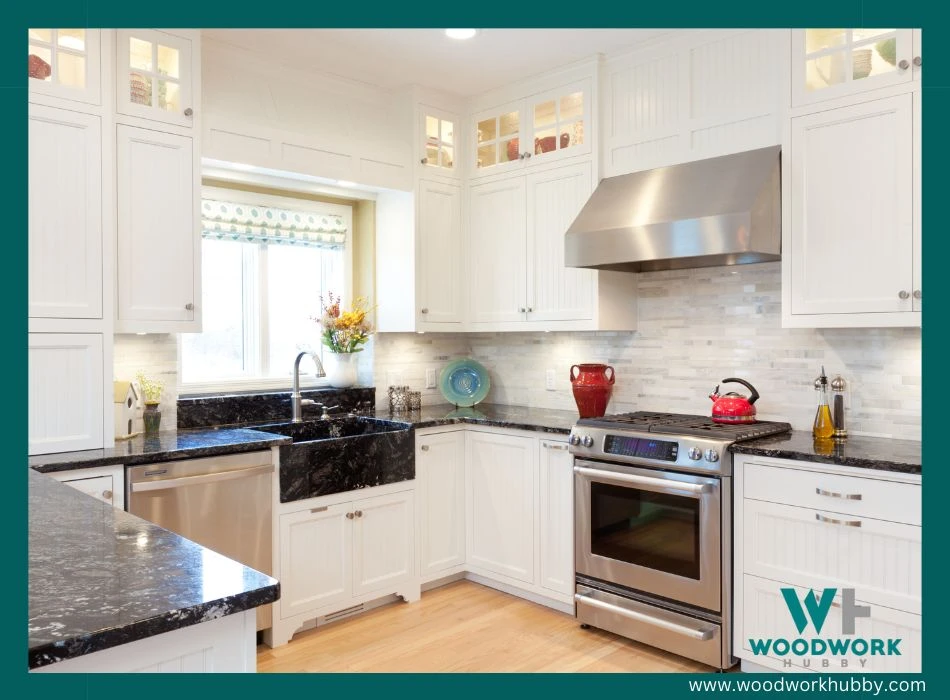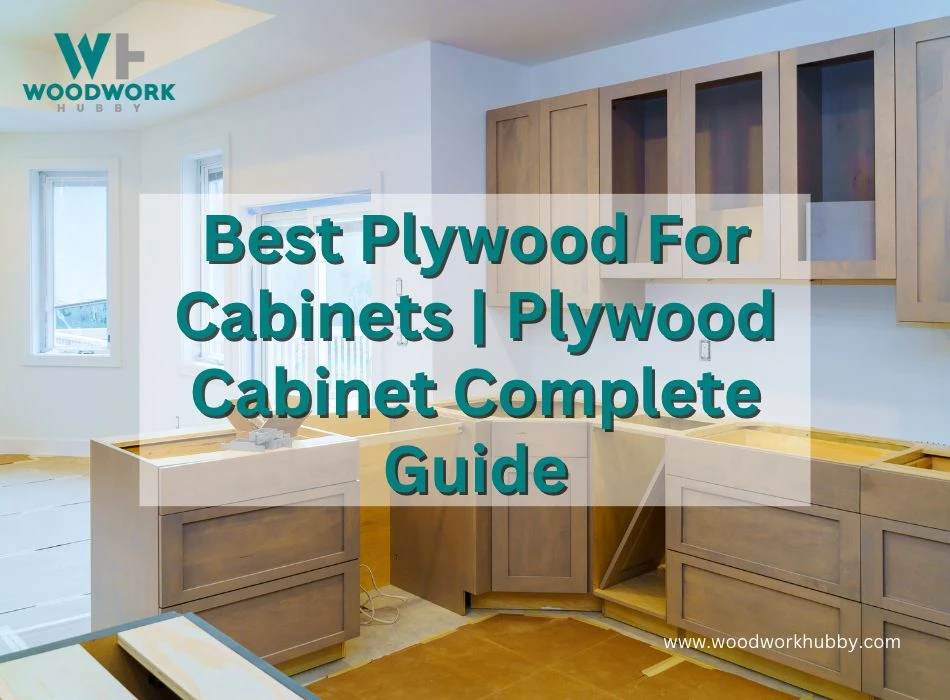Cabinetry is one of the most common uses of plywood. From appropriate joints to the right weight-holding calculations, much goes into the making of plywood cabinets. But in my 20 years of experience, I have not found anything as important to the end product as plywood selection.
Knowing and acquiring the best plywood for your project will give you more room for error.
The best plywood for cabinets is A-grade plywood made from a hardwood source like birch. It can resist scratches, bear load, and be painted without having a native texture appear through paint coats. Marine plywood and aircraft plywood is more durable but has a significantly higher price.
In this article, we will go over different types and grades of plywood that can be used for cabinets. You will discover which plywood is best for painted cabinets, kitchen cabinets, and decorative cabinets. With tables and videos alongside my two decades of experience, this is the most authoritative resource on this subject. So, bookmark it for future reference as well.
Whilst I am showing you the best plywood for cabinets, have you ever wondered will cabinet grade plywood warp? Click the link to read my article where I have explained this in detail.
What Is the Best Type of Plywood for Cabinets?
A video showing the different types of plywood.
The best type of plywood for cabinets is A-grade hardwood plywood, as it is durable and can effectively carry the load on cabinet shelves. Hardwood plywood is also referred to as cabinet-grade plywood for its common use in cabinetry and shelf-making.
For any type of plywood to be ideal for shelves and cabinets, it must be durable, workable, and resilient.
Cabinet Grade Plywood
For any type of plywood to be ideal for shelves and cabinets, it must be durable, workable, and resilient. Given that low-grade plywood and faulty plywood exist, it is understandable that people are hesitant in their selection of the material.
This hesitation can pay off because selecting the right plywood is the single most important thing a woodworker can do to build great projects.

In my 20 years of experience, nothing has paid off better than taking my time to select the right material. Because out of the hundreds of cabinets, shelves, table tops, and wardrobe backs that I have fashioned out of plywood, the first few times I researched the different types of plywood paid its dividends.
Here are a few things you must do before you choose any plywood type for cabinets or non-cabinet projects:
- Find out the different types of plywood – The higher the number of acceptable plywood types you know, the more options you have to choose from. This is especially useful if you are on a strict budget.
- Figure out the pros and cons of each type – The advantages and disadvantages of different types of plywood can better guide your decision. If you know the drawbacks before buying plywood, you won’t be surprised or disappointed.
- Understand the role of plywood thickness – Plywood gets pretty expensive with every slight increase in thickness. Knowing the minimum thickness required in a specific application can save a lot of money.
- Know your finishes – Finally, an appropriate finish is the final piece of the puzzle that brings everything together. Knowing which finish to use, and having it available beforehand can help save time and make your project more resilient.
See the products I have found that are the best degreaser for kitchen cabinets.
What Are the Different Types of Plywood Grades for Cabinets?
Knowing the different plywood alongside their respective pros and cons is crucial for a woodworker who wants to build cabinets. There are 14 sources of plywood with 3 to 4 grades in each. The different types of plywood for cabinets are:
- A-grade hardwood plywood – Used for heavy-duty cabinets and premium projects
- B-grade hardwood plywood – Used for most plywood projects because of its cost benefits
- C-grade hardwood plywood – Used in entry-level cabinets and for non-load-bearing applications within common cabinets.
Sources of hardwood plywood include Cherry, Hickory, Ash, Beech, Alder, Birch, Bamboo, Maple, Poplar, Oak, Walnut, Teak, and Zebrawood. However, hardwood plywood is far from the only type of plywood that can be used for cabinets. As covered earlier, durable plywood that is workable and cost-effective can work for cabinet-making.
In my 20 years of experience, I have found cabinets made from different types of plywood and have also fashioned some out of plywood that I would never have assumed to lend itself to cabinetry. Here’s what I discovered.
Most of this plywood comes in an 8’x 4′ sheet and should fit in your vehicle.
Best Plywood For Cabinetry
| Plywood Type | Pros | Cons |
|---|---|---|
| Hardwood plywood | Made from hardwood sources. Can support a reasonable amount of weight It is durable for a long-term project. | Sources and grades vary too much to have uniform results. The category is too broad. |
| Aircraft Plywood | Is the most durable hardwood plywood Unlikely to break or deteriorate in common use scenarios | It can be pretty expensive for average cabinet projects. |
| Exterior Plywood | Resists moisture and even rain. Perfect for washroom and kitchen cabinets. Lower chances of mold or mildew | Can be redundant in interior applications A layer of waterproof primer on regular plywood is just as effective indoors. |
| Lumber core Plywood | A thick interior made from hardwood makes this extra durable. | It is not worth its price and durability for average cabinets |
| Marine plywood | Resists getting submerged in water, making it very moisture-resistant | Has virtually the same effect as a waterproof coat on an average hardwood plywood sheet. |
| Decorative Plywood | Hardwood plywood with a decorative wood veneer. Looks beautiful without painting and priming | It is redundant in cabinet projects that are to be primed, painted, and coated |
If the above seems too complicated, remember that A and B-grade hardwood plywood is good enough for cabinets. It can be waterproofed with a primer or paint. But if you want to get serious about making plywood cabinets and selling them, knowing the different types will be very helpful.
And even if you don’t explore all types, make sure to study the ones that are common, like poplar and birch. After all, plywood panels need to maintain straightness and strength over time.
Check out my ultimate guide on how far can plywood span.
Is Birch Plywood Good for Kitchen Cabinets?
A video showing what is Baltic Birch Plywood and cabinet building basics.
Birch plywood is good for kitchen cabinets as long as it is sufficiently thick. The birch source is durable, as is the adhesive used in manufacturing plywood sheets.
Birch plywood boards are scratch-resistant, tough, and have a high load-bearing threshold. However, birch is quite porous, and in the absence of a laminated veneer, this plywood can get stained easily.

The advantages of birch plywood are functional, while the drawback is visual/aesthetic. This makes birch plywood ideal for the insides of cabinets, the siding, and the back. It could work as shelf material, too, but the problem of spillage and permanent stains is there.
If you use birch plywood for kitchen cabinets, you need Waterproof Varnish. A product like Rust-Oleum Marine Spar Varnish can offset the drawback of birch’s porous nature. Kitchens can have plenty of water vapor due to boiling and heating.
Waterproof varnish is a must. It is specifically used to cover water-adjacent surfaces like boat railings. As long as birch plywood is sufficiently waterproofed, the only other thing you have to consider is its thickness.
What Thickness of Plywood Is Best for Cabinets?
Plywood Thickness
3/4-inch (19.05mm) plywood is best for cabinets as it is thick enough to bear load but isn’t too heavy to be installed on a high cabinet. In non-load-bearing areas like the cabinet top, sheets as thin as 1/4-inch (6.35 mm) can be used. However, it is always safer to err on the side of thicker plywood.
If you use plywood that is 3/4-inch (19.05mm) thick, you have the benefit of knowing that the board can bear the most common cabinet storage weight. But you are at a price disadvantage. 3/4-inch thick (19.05mm) plywood is generally twice as expensive as 1/2-inch-thick (12.7mm) plywood.
A sheet of plywood in thickness is heavier to handle also. So, it is reasonable to wonder if thinner plywood boards can be sufficient for cabinets as well. After all, if you can get away with spending less money, why spend more?
Is 1/2 Inch (12.7 mm) Plywood Strong Enough for Cabinets?
1/2-inch (12.7mm) plywood is strong enough for some cabinets that don’t have a higher storage requirement. A 1/2-inch (12.7mm) plywood board can hold up to 32 lbs (453.592 g) per square foot. Even with limited siding and upholding capacity, the weight that a 1/2-inch plywood shelf can carry within a cabinet is practical.
See my full guide on plywood weights here.
A cabinet crafted from 1/2-inch (12.7 mm) plywood boards is not as resilient as 3/4-inch (19.05 mm) plywood cabinets. However, they are easier to build because the thinner boards are easier to work with. They are also cheaper than 3/4-inch (19.05 mm) plywood.
Finish Plywood For Cabinets
You can use a 1/2-inch (12.7 mm) plywood cabinet for the following contexts:
- A small decorative cabinet – Cabinets that have to be there just to be there are generally empty. It is indulgent to use 3/4-inch(19.05 mm) plywood for such cabinets.
- Kitchen cabinets for utensil storage – As long as the cabinet doesn’t house multiple heavy iron pots, it should be able to handle most kitchen items.
- Grounded cabinets – Grounded cabinets have low gravity force on them. As a result, they have the capacity to house heavier utensils, tools, and items.
- Countertop cabinets – Countertop cabinets are supported by the countertop material, which is more durable than plywood. Thin plywood can use that kind of support.
| Plywood Thickness | Best For | Worth-Noting |
|---|---|---|
| 3/4-inch(19.05 mm) | Exterior and cabinet bottom. | It can handle the most weight among cabinet-grade plywood boards commonly found in stores. |
| 1/2-inch (12.7 mm) | Doors and shelves | 1/2-inch plywood shouldn’t be used for shelves if the cabinet load is too heavy. |
| 1/4-inch (6.35 mm) | Cabinet back and veneer reinforcements. | It can be used for cabinet tops as well if there is no load to be placed on top of the cabinet. |
| 5/32-inch (3.96875 mm) | Decorative purposes | While these boards are used in cabinets, they are very rarely in a load-bearing role. |
Whatever the distribution of plywood thickness is in your project, remember that the hanging rails and the shelves need to be sufficiently thick. These are the parts that bear the most weight and need to be durable. They are under constant pressure.
If you don’t have a very tight budget for your project, you can simply use the thickest plywood board available for every part. But that is very impractical and hard, even from the crafting perspective.
Particle Board
Do not use particle board for cabinets. I have found it warps and bows severely over time and is probably the worst sheet material for cabinet building.
What Is the Best Type of Plywood for a Painted Cabinet?
A1 or A2 plywood with a plain veneer is best for a painted cabinet. The desirable quality in the plywood you seek for a painted cabinet is that it should not have a texture that shows through the paint. Plywood with closed grain, like Birch plywood, is perfect for such cabinets.
There are two ways to handle a painted cabinet project. The first is to get plywood that adheres to paint. And the second is to use plywood with a veneer that can be painted on.
There are two ways to handle a painted cabinet project. The first is to get plywood that adheres to paint. And the second is to use plywood with a veneer that can be painted on. In both cases, the outermost parts of the cabinet are the most important ones.

The inner shelves can be made from other plywood boards that aren’t as easy to paint. It is best to use birch plywood if you plan to paint your cabinet, but it is not necessary to do so.
What Finish Should I Use on My Plywood Cabinets?
You should use a polyurethane finish on your plywood cabinets if you want the cabinet to be able to handle a lot of punishment, including repeated slamming. Painting your cabinet exterior with 2 coats of paint is best as this reduces the chances of the paint getting scrubbed away, and creates a more interesting appearance.
In my experience, brush quality is just as important as the finish choice because if you don’t get the right quality brush, the second layer of paint will retain an impression of brushmarks.
In my experience, brush quality is just as important as the finish choice because if you don’t get the right quality brush, the second layer of paint will retain an impression of brushmarks. It looks amateur at best and downright erroneous at worst. I use Country Chic Chalk Style Paint Brush as I find it easier to minimize harsh brush marks when painting cabinets.
Country Chic Chalk Style Paint Brush
A finish has multiple purposes. Firstly, it is meant to give the product a specific feel. This texture change (or lack of change) is also aided by a change in appearance.
A matte finish reduces how much light is reflected off a cabinet, while a glossy finish gives a shinier appearance. But a most important aspect of a finish is whether it waterproofs a project or not.
Polyurethane, like Minwax Protective Wood Finish, comes in Satin (matte) as well as Gloss versions. Polyurethane is not confined to one appearance. It is also resilient against potential water damage and resists scratches. When you use Minwax or any other high-quality polyurethane finish on any hardwood plywood exceeding 1/2-inch (12.7mm) thickness, you give it a good shot at longevity.
Minwax Protective Wood Finish
Fast Drying Polyurethane Protective Wood Finish
- Protects interior projects like woodwork, furniture, floors, and cabinets.
- The clear finish provides long-lasting protection and warm beauty to both finished and unfinished wood projects.
- Give your wood projects a sleek finish with this satin clear varnish.
- 4.7 ⭐⭐⭐⭐⭐
Minwax Protective Finish has over 8,900 reviews and ratings, which is well over the 500-review mark, after which faking reviews becomes nearly impossible. I would vouch for this finish by ratings alone, but I have personally used it and found it to be an 8.5/10. It’s collective rating on Amazon is 4.7 out of 5 stars.
Derek’s choice
How To Identify The Best Plywood For Cabinets
These are what I consider the things you should look for when choosing the best plywood for cabinetry:
- Flatness – Good quality plywood is usually nice and flat. You should inspect the sheets to ensure they are flat and straight. This will help give you the best finish in your cabinets.
- Face Veneers – All plywood is made of veneers of wood. The faces of your plywood should have clean faces free from large knots or defects that have been filled. A-Grade plywood will have clean, crisp faces which will give you a great finish for cabinets.
- Edge Inspection – Carefully inspect the edges of the plywood to ensure there are no voids in between any of the veneers. Good quality plywood will contain even veneers and no gaps whereas cheaper plywoods may have air voids.
- Grading System – To get the best finish for cabinets, you should always stick to A-grade plywood as it will be flat, straight, and have excellent faces. B and C-grade plywoods generally lack in one of these areas.
Final Thoughts – Best Plywood for Cabinets
Plywood for cabinets is easy to select once you know what you want. If your cabinet is not supposed to last over a decade, don’t consider aircraft plywood or marine plywood. As long as the cabinet is meant to store products, you need to use hardwood plywood.
3/4-inch (19.05mm) thickness is recommended wherever you notice a higher load burden. 1/2-inch (12.7mm) plywood works too. But any plywood sheet thinner than half an inch should be used only in decorative and non-load capacity.








